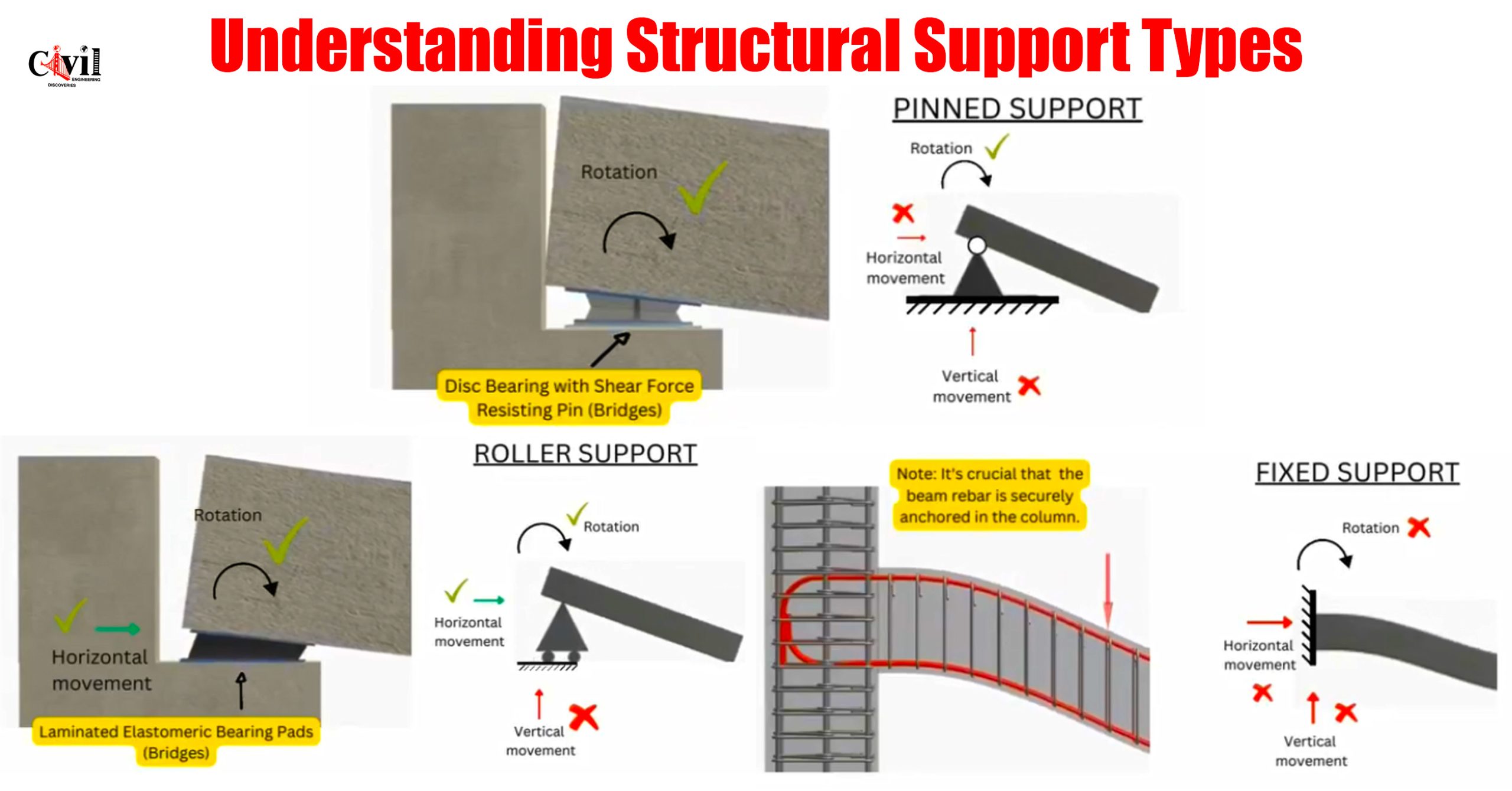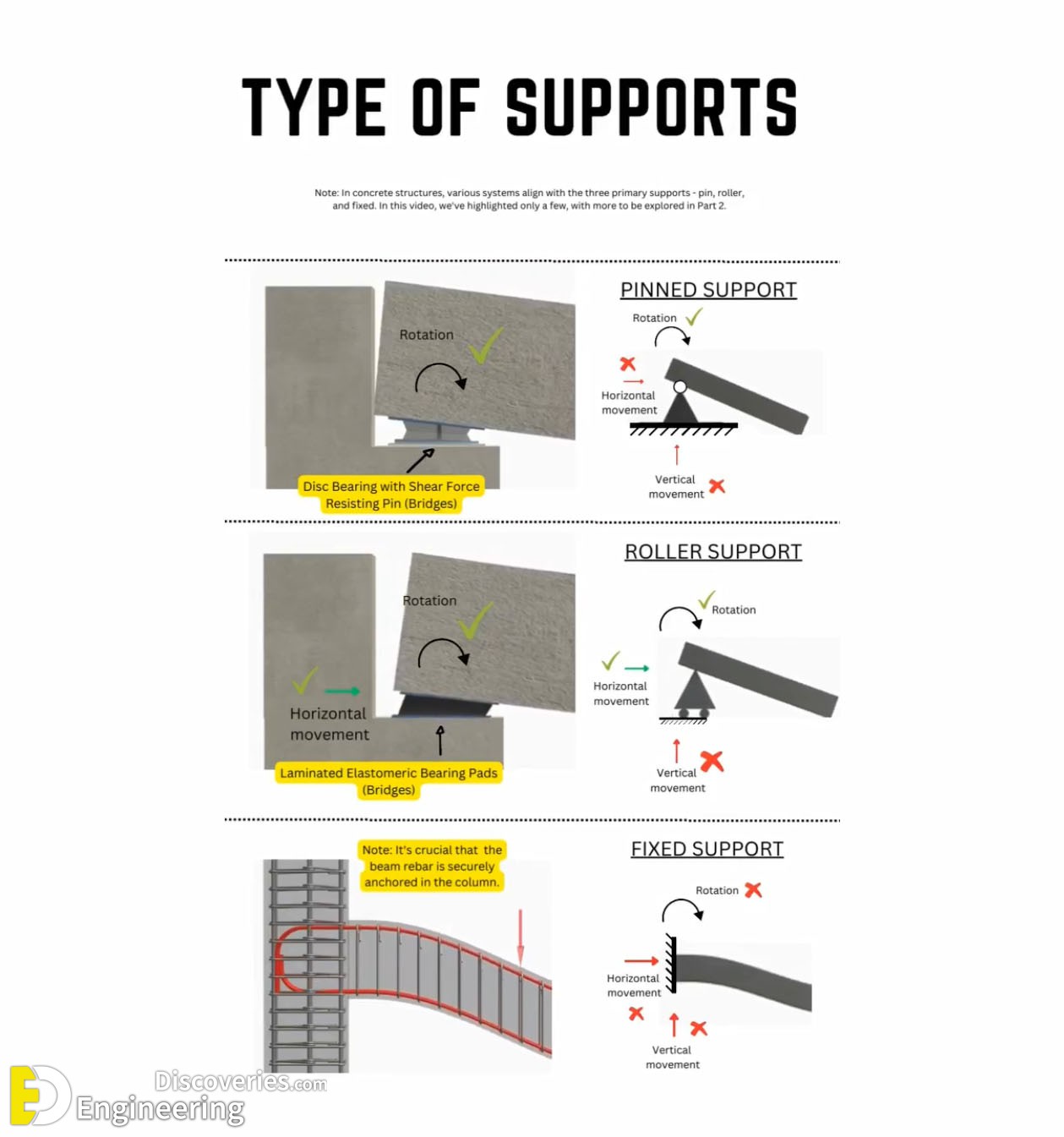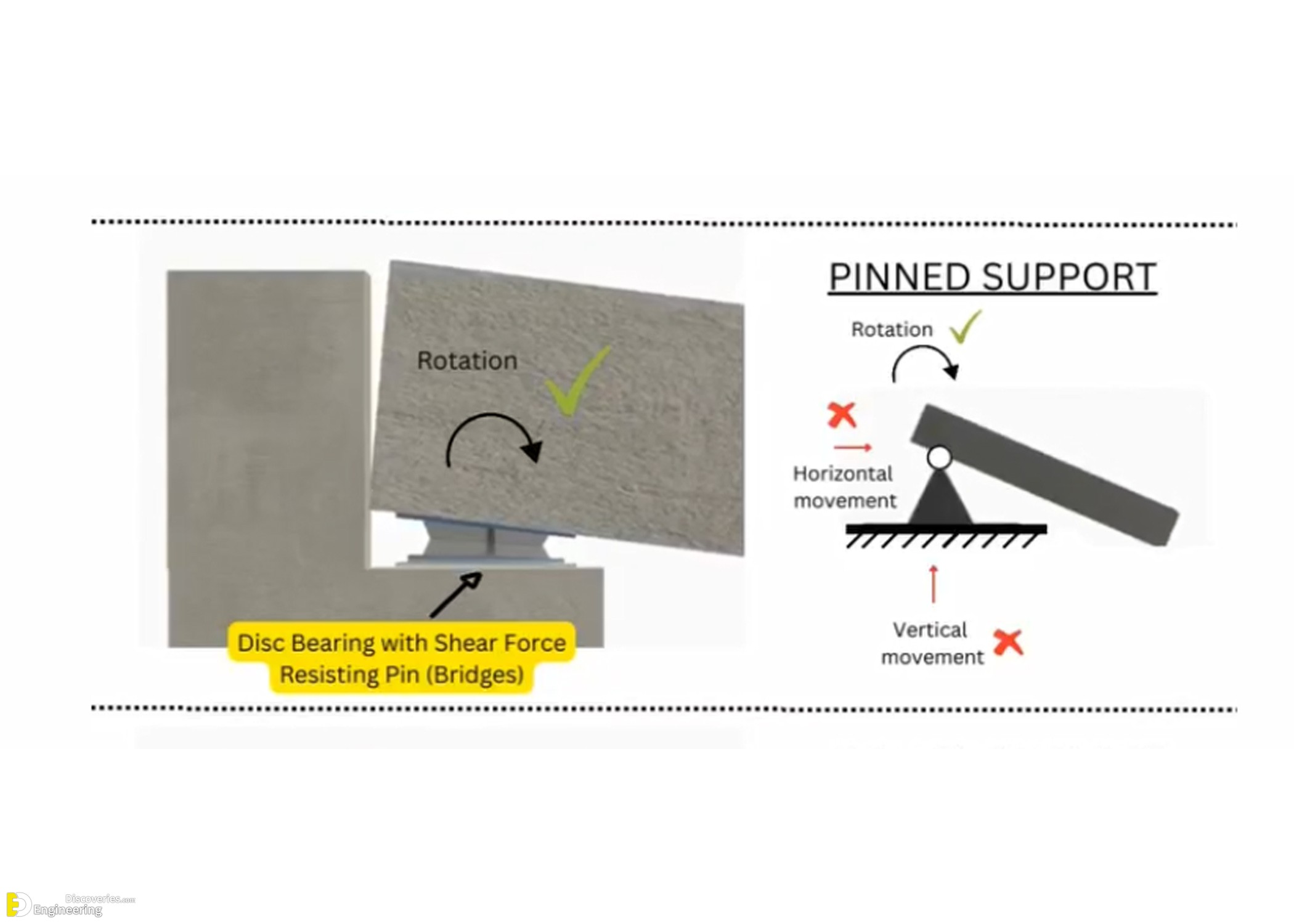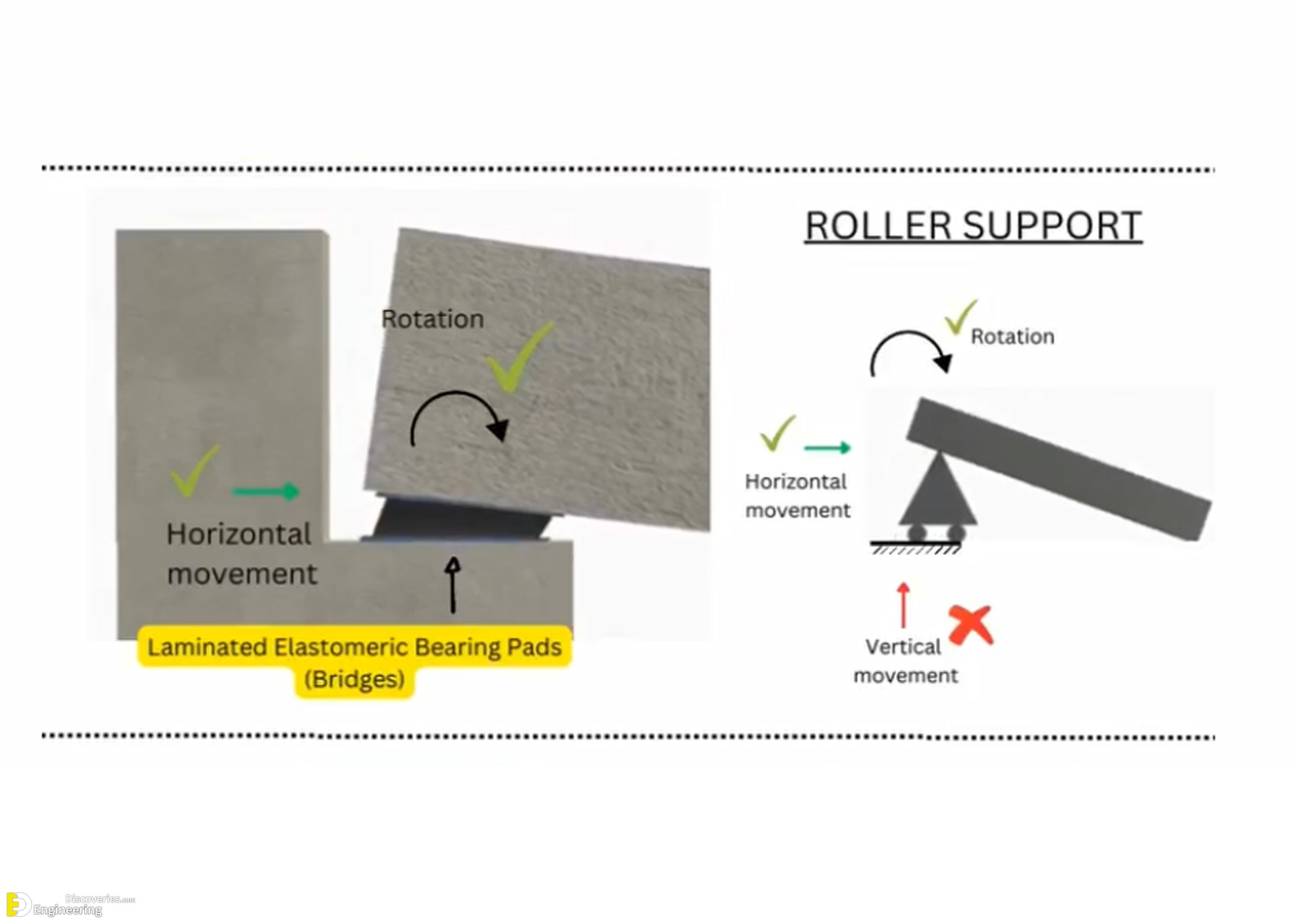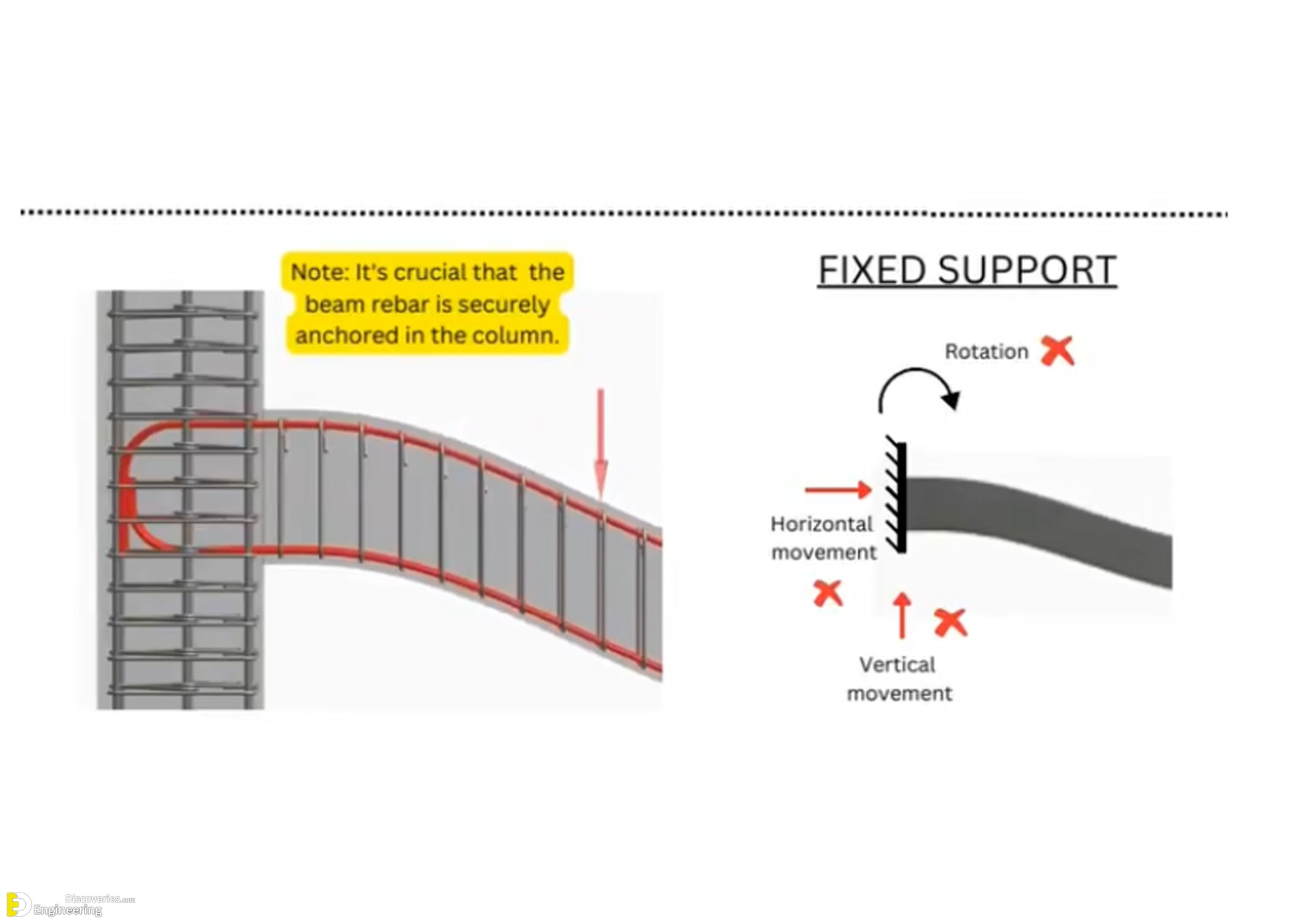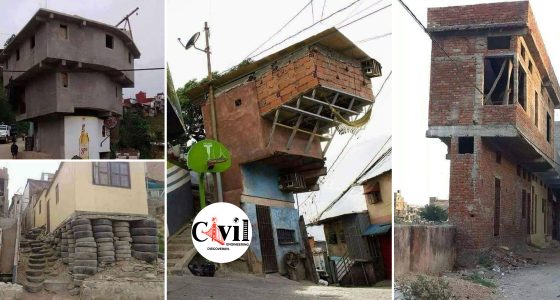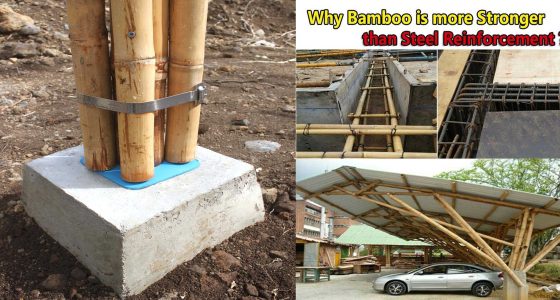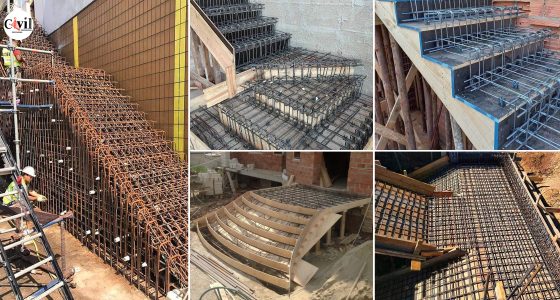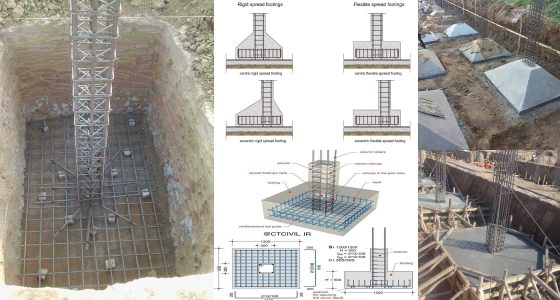Support types in civil and structural engineering determine how forces are transferred and distributed. Three major types of structural supports—pin, roller, and fixed connections—play key roles in building stability. Each has unique behavior under load, offering engineers flexible design options for various applications.
Pin Connection: The Flexible Load-Transfer Joint
A pin connection is a fundamental support type used widely in structures.
It allows rotation at the joint but prevents translation in any direction.
This feature offers both stability and flexibility, essential for systems like trusses and bridges.
In truss frameworks, pin joints let members rotate slightly under load.
This behavior helps the structure handle dynamic and shifting forces more effectively.
By isolating rotation, pin connections reduce internal stresses that can lead to structural fatigue.
Additionally, their simplicity makes them easy to construct and maintain.
Pin supports are often used at bridge ends and in roof trusses for long-span efficiency.
Roller Connection: The Movable Structural Support
Roller connections offer another vital solution in structural engineering.
Unlike pin supports, they allow lateral or horizontal movement, while still resisting vertical forces.
This flexibility helps structures respond to thermal expansion and load shifts.
Common in bridge bearings, roller connections allow sections to move without damage.
They maintain support while absorbing changes in length caused by heat or traffic.
Roller bearings reduce stress by allowing motion, protecting the structure over time.
Engineers often pair roller supports with pinned ones to allow controlled motion in one direction.
This combination enhances both stability and flexibility, crucial for bridges and long-span buildings.
Fixed Connection: The Rigid Structural Anchor
A fixed connection is the most rigid support in structural engineering.
It prevents both rotation and translation, securing the element firmly in place.
This type of joint is used where absolute stiffness is needed, such as frames and columns.
Fixed supports resist all external forces and moments.
As a result, they offer maximum load resistance, ideal for critical parts of buildings.
Though more complex to design and construct, their strength ensures long-term durability.
You’ll find fixed supports in concrete columns, retaining walls, and rigid frame structures.
Their use helps maintain structural integrity under extreme loading conditions.
Choosing the Right Support: A Structural Balancing Act
Each support type has specific advantages.
Engineers select them based on structure type, expected loads, and environmental conditions.
While pin connections provide flexibility, rollers allow movement, and fixed supports offer complete restraint.
A well-designed structure often includes all three types.
Their combination ensures stability, efficiency, and adaptability, meeting the demands of real-world use.
Click Here To See Types Of Shear Reinforcement In Reinforced Concrete Slabs


